Twilio SendGrid
This integration lets you send transactional and marketing emails through Twilio SendGrid's email service from Bloomreach Engagement.
How to set up the integration
Set up your Twilio SendGrid account
Your Twilio SendGrid account must be a subaccount under Bloomreach's SendGrid parent account. If you already have a SendGrid account, migrate it under Bloomreach's SendGrid parent account. Contact your CSM if you don't have a Twilio SendGrid account—they can help you create it.
Already have a Twilio SendGrid account?
We still recommend setting up a separate account just for Bloomreach Engagement. Shared accounts send status updates for all emails, which can affect privacy and slow things down.
Get your account details
You also need:
- API Key ID: Your unique 69-character API Key ID to authenticate access to your Twilio SendGrid account.
- IP pool name (optional): An existing IP pool you want to use.
What's an IP pool?
IP pools are groups of dedicated IP addresses used to improve email deliverability by separating different types of email traffic.
Authenticate your domain in Twilio SendGrid
You need to authenticate your domain to improve email delivery and build trust with email providers and recipients.
To authenticate your domain:
- In Twilio SendGrid, go to Settings > Sender Authentication.
- Click Authenticate Your Domain > Get Started.
- Follow the steps in your account.
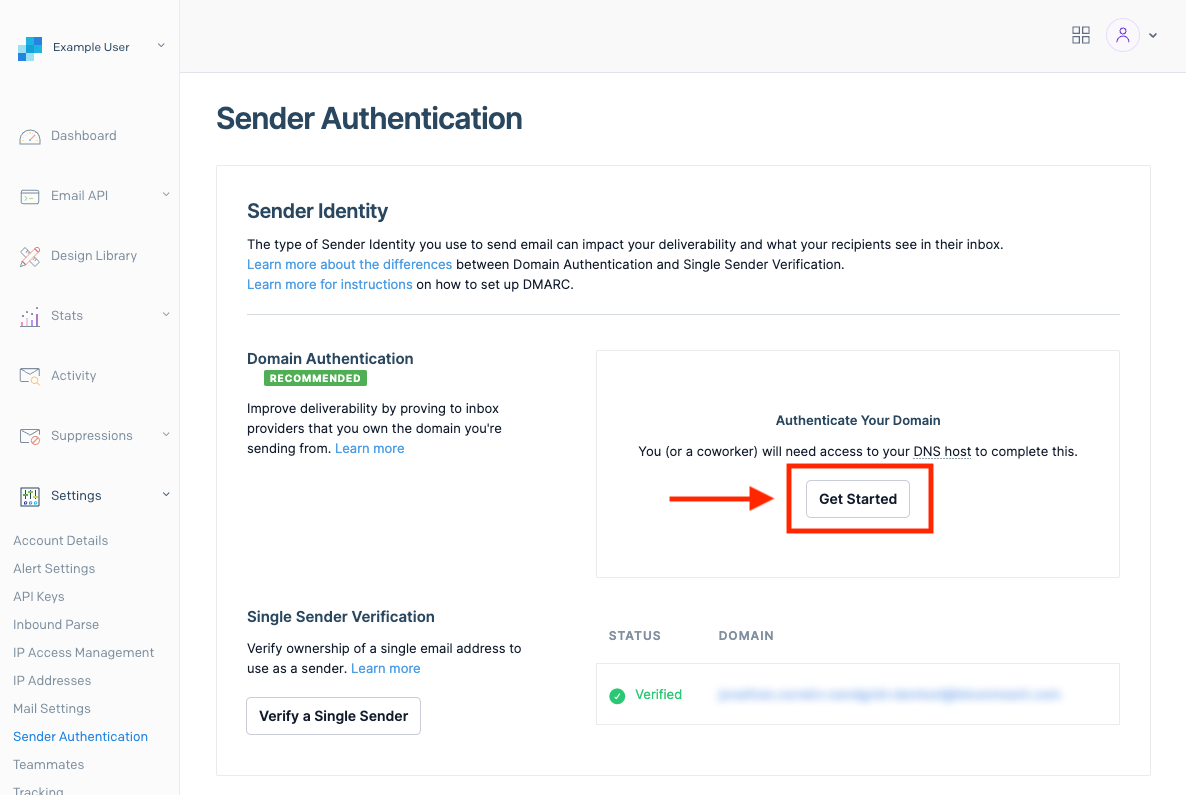
You'll need access to your DNS host. If you need help, ask your technical team.
Allow time for domain verification
Verification usually takes less than an hour but might take longer.
Create an API key
- In Twilio SendGrid, go to Settings > API Keys.
- Click Create API Key.
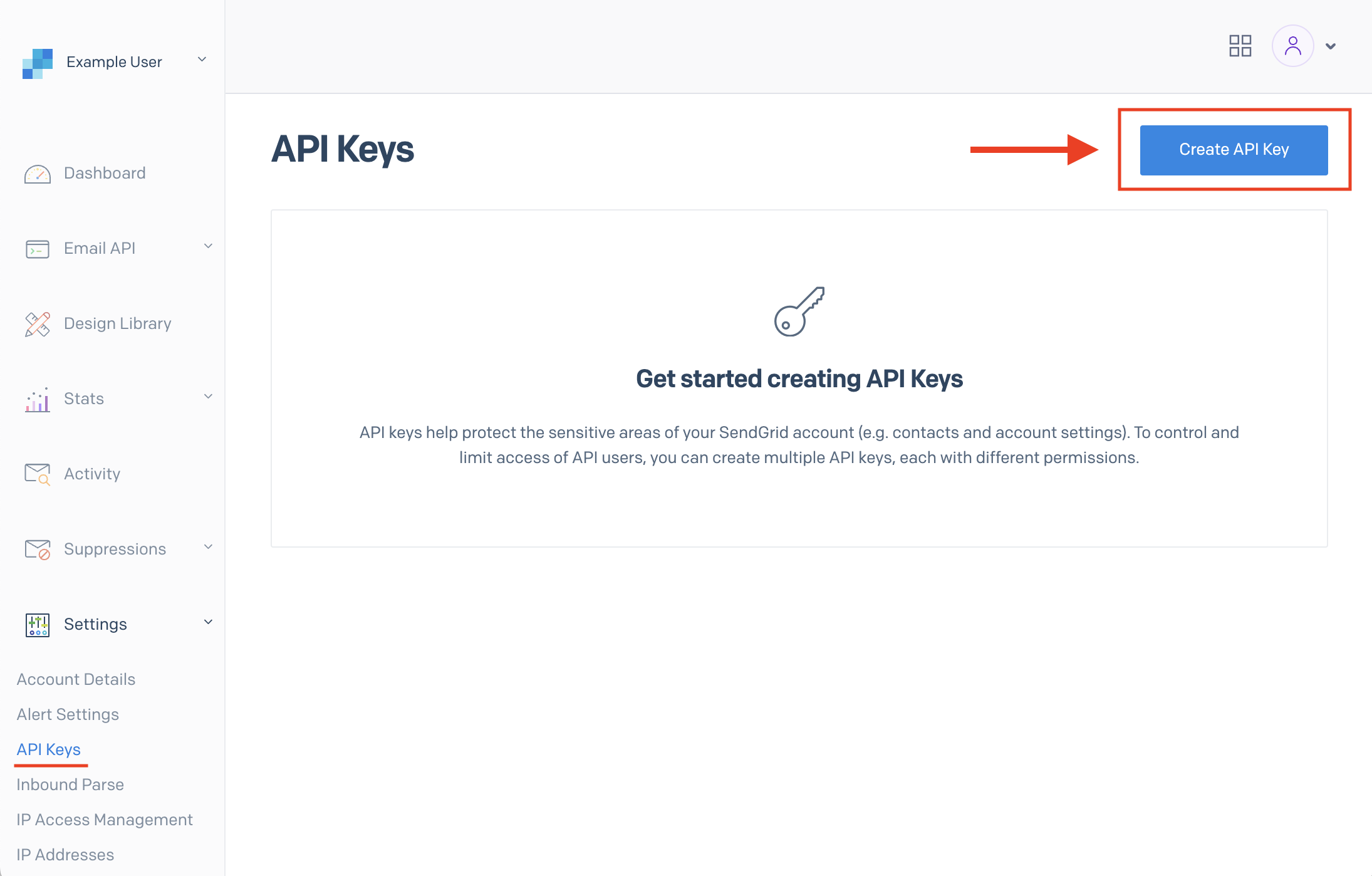
- Give your key a name. We recommend including "Bloomreach" in your API Key name so you don't delete it by mistake.
- Set permissions to Full Access.
- Click Create & View.
Important
Copy your API key right away—it's only shown once. Save it somewhere safe because we can't get it back or restore it.
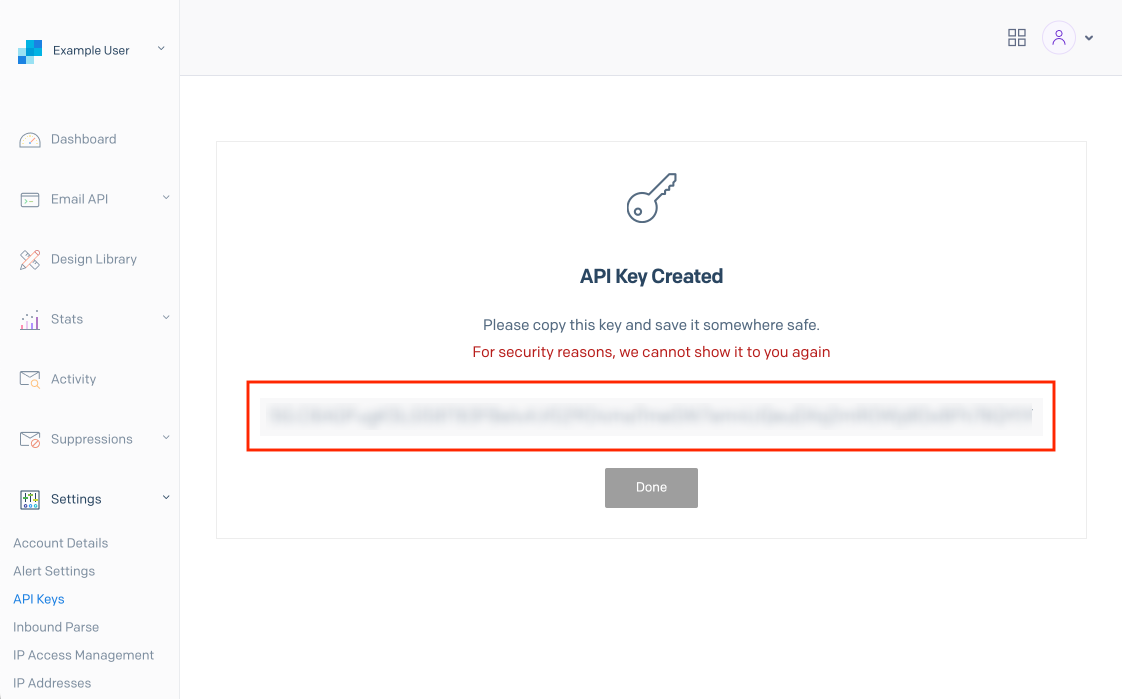
Connect the integration
Add Twilio SendGrid Email integration
- In your Bloomreach project, go to Data & Assets > Integrations > + Add new integration.
- Search for Twilio SendGrid, then click + Add integration.
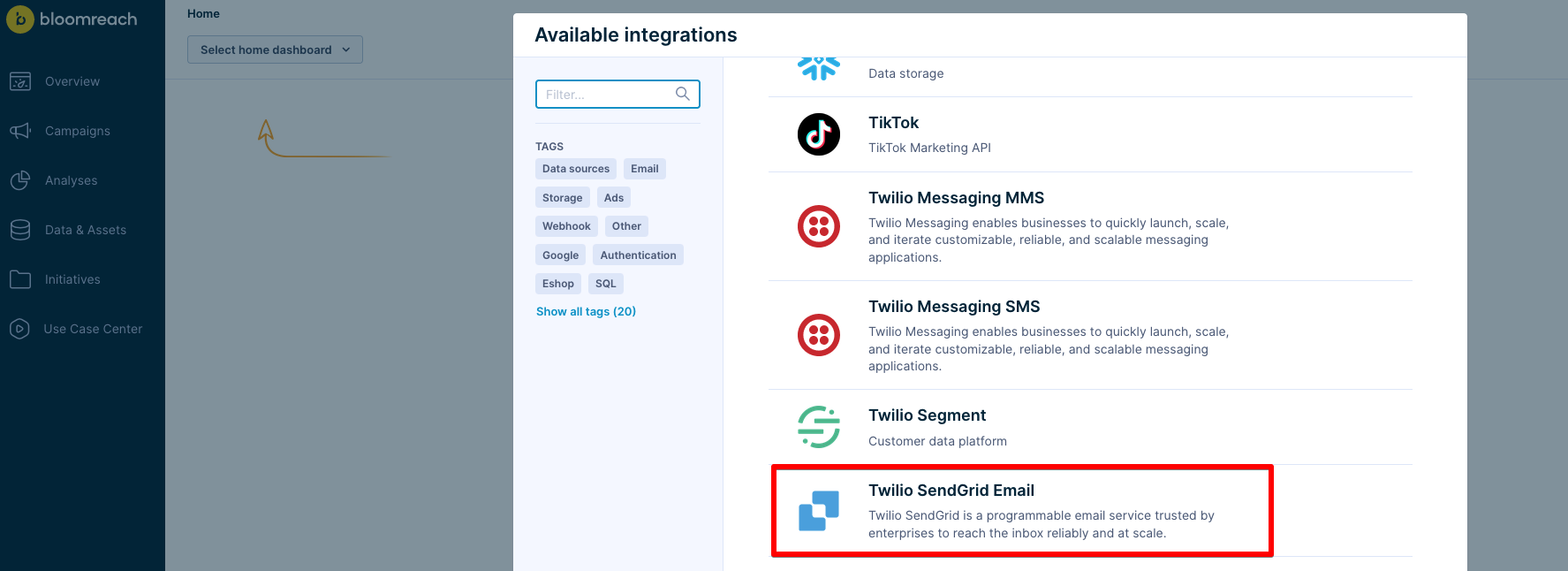
Enter the API key
Fill in the integration fields:
- Paste the API Key you copied from Twilio SendGrid.
- Add your IP pool name if you're using one (optional).
- Make sure Handle webhooks automatically is checked.
- Click Save integration.
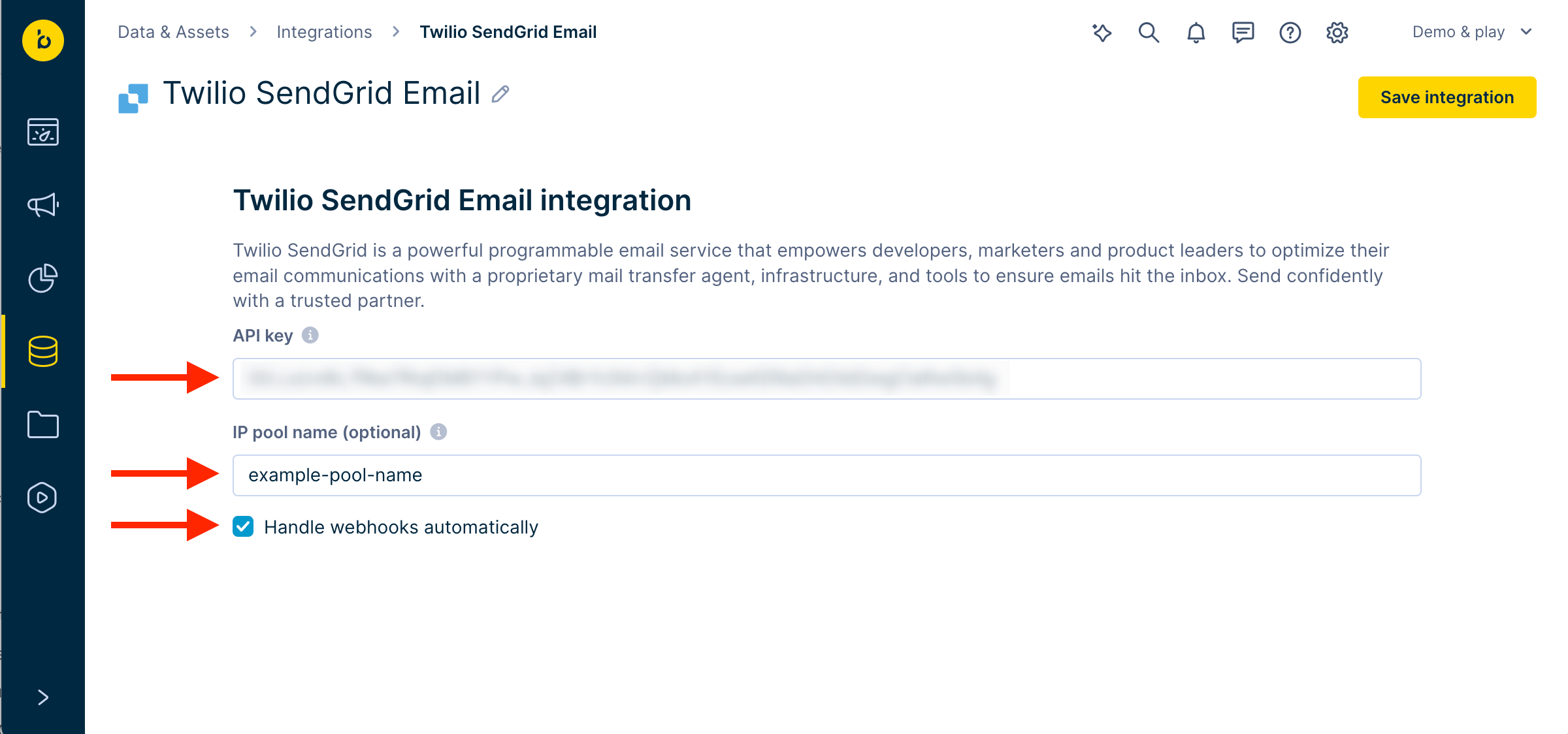
Don't reuse API keys
Bloomreach Engagement allows you to use the same mail API key in multiple integrations even in multiple projects. However, if multiple projects share the same key, deleting one integration deletes the webhook and disables tracking for all of them.
Webhook configuration (optional)
If you didn't turn on automatic webhook handling:
- In your integration settings, copy your unique tracking webhook URL.
- In Twilio SendGrid, go to Settings > Mail Settings > Event Webhooks.
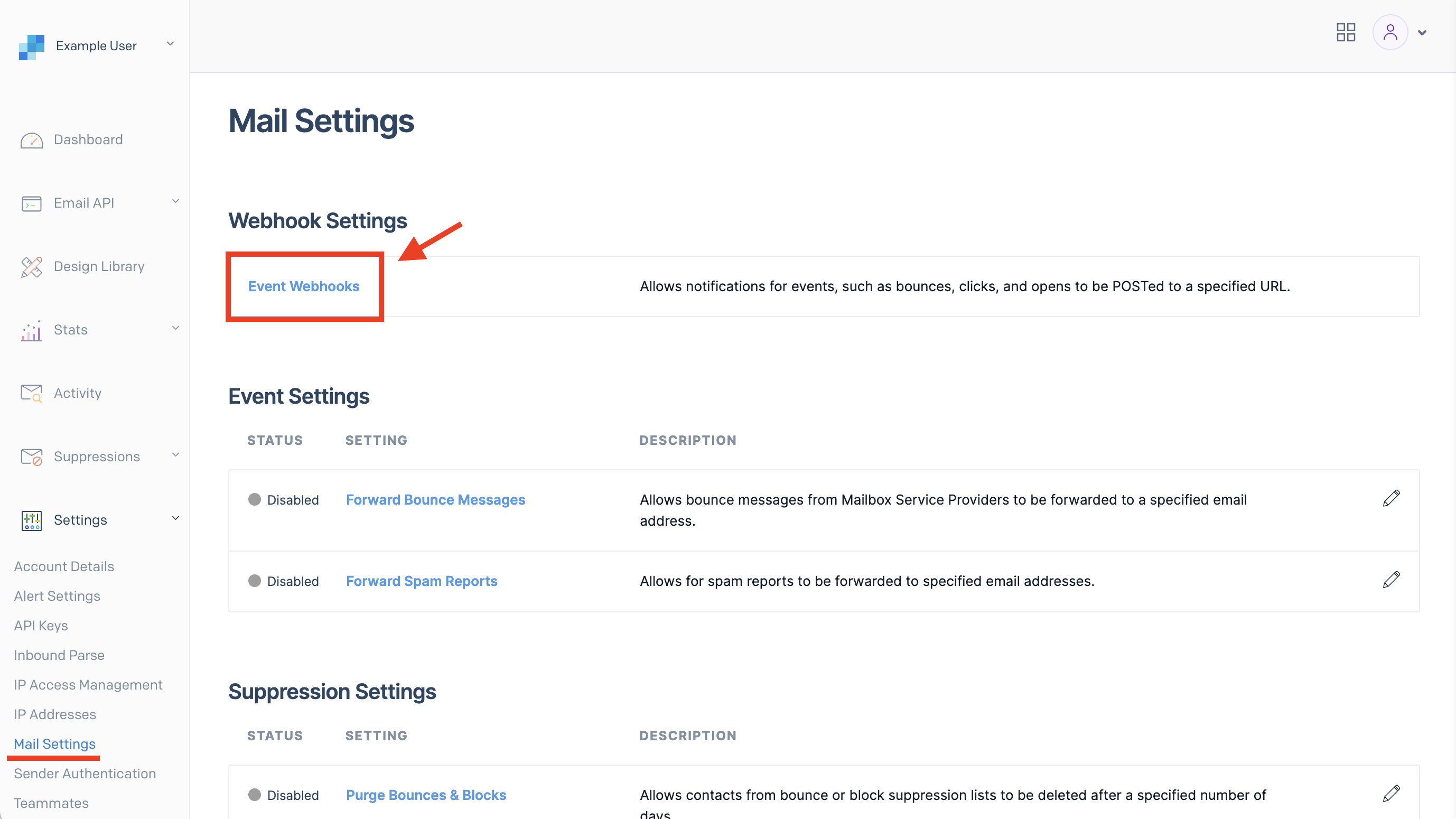
- Click Create new webhook.

- Paste the URL into all required fields.
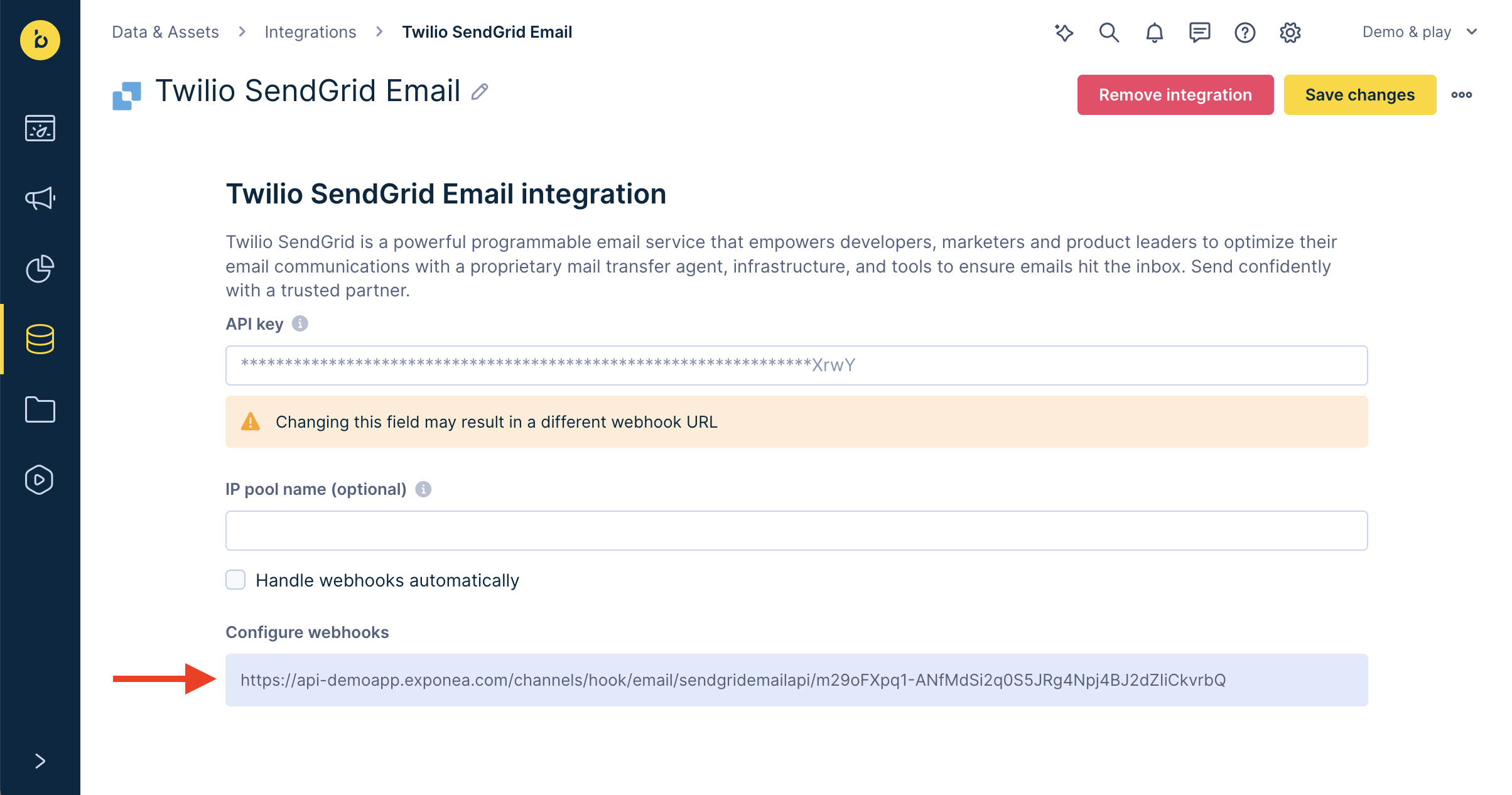
You can now use Bloomreach Engagement to send signed emails from your own domains using Twilio SendGrid.
For details on webhook setup, see Webhooks.
Default email provider
For details on how to set this integration as your default email provider, see Default email settings.
Working with emails
For more details on working with emails in Bloomreach Engagement, see Working with emails.
Updated 5 months ago
